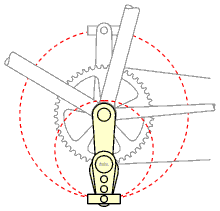Physiotherapist and Director of Physio Remedies, Paul Martin writes: If you fail to prepare you are preparing to fail. This and hundreds of other nags from childhood frustratingly seem to prove themselves as we get older. This is just as true with a ski trip as anything else, so here are a few things to consider.
1. Prepare well
Try to arrive in good physical condition. Being stronger and well coordinated helps you be more robust as you hit the slopes, but aerobic fitness is important with regards to acclimatisation. The earlier you can start working on this, the better, however it’s never too late to start to make changes (starting three days beforehand might be pushing the bounds of physiological adaptation a little bit).
Ideally aerobic fitness levels should be worked on two tot three months prior to your holiday, whether it is running, swimming or biking. Increase your effort gradually over this time and then two weeks before keep training at a maintenance level appropriate for you.
2. Take a relaxing walk on arrival
Carrying bags, skis, kit and other peripherals adds extra load to travel, which is in itself an energy sapping experience. When you arrive at your hotel/chalet and have checked in, go for a walk to loosen off so you are not hitting the slopes tight and tired.
3. Stay hydrated
Dehydration can have effects on many body systems from the annoying (bad breath and dry skin) to something more important for physical activity (muscle cramps and slow response times).
On the plane/bus/car journey ensure you drink water or diluted juice drinks and during your trip be conscious of how much alcohol, drinks high in sugar and caffeine you are consuming, especially if you are unable to get water on board.
Quick checks are colour of urine (should be more straw yellow colour than milkless builder’s tea) or pinch a small area of skin – it should return to shape within two seconds if hydrated enough.
4. Get extra sleep
Get extra sleep on the first few days, better to go to bed early than having a lay in.
5. Pop your goggles on early
Start wearing your goggles half an hour before you are due to start your first run, as it allows your eyes to adapt to the change in colour which in turn will improve your reaction time on the run. Good reactions minimise risk of injury.
6. Allow time to find your 'ski-legs'
If it’s been a while since you last skied, allow yourself time to acclimatise and get your 'ski-legs'. Keep it simple, stick to easier runs initially and don’t push too hard too soon. After the first couple of runs and when you feel you have got your rhythm – enjoy!
7. Eat sensibly
Be sensible with your diet – keep it balanced with a slightly higher volume of carbohydrate as these break down most easily into useable energy.
8. Warm up and warm down every day
Make sure you warm up and warm down as what may seem no problem on day two, might well be a problem on day five. Tight and tired muscles can impede reaction time and enjoyment of skiing.
9. Do you really need to fit in that 'last run of the day'?
In the vast majority of post-injury physio sessions, when asked what happened to cause the problem the opening line is very often ‘It was the last run of the day and I thought I could just squeeze another one in’. If you are tired (but might not be feeling it), if things are getting icier (especially if your reactions are slowing down), if you have half a mind on what you are doing that evening rather than the slopes, is it worth the risk of a nasty injury?
10. A word about knee injuries
Although skiing injuries usually affect multiple areas of the body, the knee is the most commonly injured body part, with evidence indicating 42% in some studies. Further to this, the ACL (Anterior Cruciate Ligament) is the highest injury observed within the knee occurring in all ages, genders and technical levels.
Our knee specialist physio, Stuart Mailer, has written a blog post dedicated to avoiding knee-related skiing injuries.
Take home:
Prepare well if you‘ve not been as active as you would have liked in the previous few months.
Be mindful of what you eat for fuel and drink to remain hydrated
Don’t take silly risks, especially early on in your holiday and at the end of the day
Stay safe and have a fabulous holiday!
If you do have an accident or pick up an injury whilst on your winter hols, call us on 02030 12 12 22 to book an appointment. We work with the top surgeons in the UK and can help put you back together again.
Words by Paul Martin.










